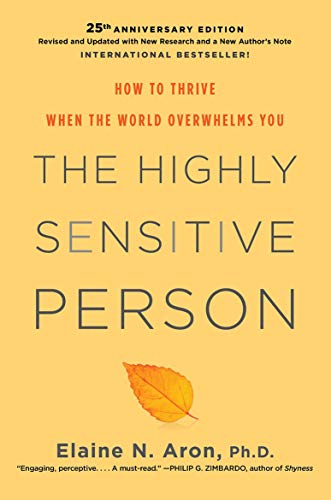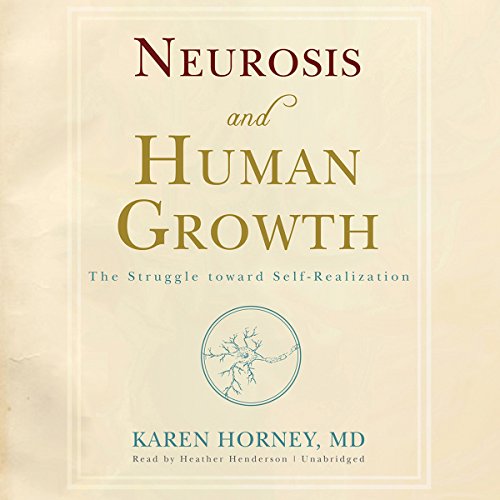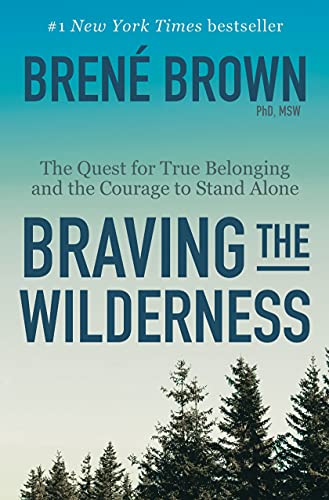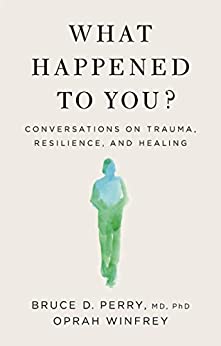Jacob Marley in The Matrix
Elaine Aron’s The Highly Sensitive Person helped me appreciate myself as a highly sensitive person (HSP). But cycles of success and failure, action and stagnation, and positive and negative thoughts and emotions persisted in my life. That’s when I realized there is another side to being highly sensitive for many of us.
Adverse childhood experiences (ACEs) such as physical, sexual, and psychological abuse, neglect, or abandonment can bring physical, mental, emotional, social, criminal, and financial troubles throughout life. As children from traumatic childhoods grow into adulthood, their lives can become like Dickens’ ghostly Jacob Marley dragging ponderous chains through a world as unreal as the Matrix.
While ACEs can affect anyone, HSPs are particularly vulnerable. Research shows that HSPs raised in dysfunctional environments often have devastating lifelong difficulties. More so than non-HSPs raised in similar settings.
In The Orchid and the Dandelion, W. Thomas Boyce, MD, confirmed the dire plight of Highly Sensitive Children (HSCs) raised in adverse environments through his research and follow-up interviews into adulthood. HSPs from supportive homes thrived, whereas those from adverse backgrounds had lingering health, career, and relationship troubles.
He advanced supportive environments for HSCs but offered little hope for adult HSPs to alter the dire futures of those with adverse childhood experiences. While I am proud to be an HSP, Dr. Boyce’s dire predictions made me feel as if I had solved a great mystery only to find that I was the murder victim. I needed to dig deeper.
|
|

|
|
| HSPs and Childhood Trauma
To start, I reread The Highly Sensitive Person, the 25th Anniversary addition. This time I specifically looked for information about HSPs from adverse childhoods.
When doing her research, Dr. Aron was surprised to learn that psychoanalyst Carl Jung, a Freud contemporary, studied HSPs. He was an HSP. Jung found HSPs unusually affected by childhood trauma and prone to developing “neurosis.” In contrast, he discovered that HSPs not subject to childhood trauma were not inclined to neurosis.
In her book, Dr. Aron noted that it is “easy to understand why a troubled childhood might affect HSPs more than non-HSPs.” Likewise, Dr. Bruce D. Perry, the neuroscientist and psychiatrist who coauthored
What Happened to You? with Oprah Winfrey, agreed that those with genetic sensitivity are more affected by childhood trauma.
Studies confirm the dramatic long-term effects troubled childhoods have on HSPs not seen in HSPs who did not have childhood trauma.
|
|
|
|
Adverse Childhood Experiences
To see if my childhood experiences put me within Dr. Boyce’s HSP risk group, what I call the “damaged orchids,” I took the ACEs Quiz. The ACEs Quiz is a ten-question inventory of childhood experiences. Scores run from 0-10, with any score over “3” indicating possible future medical/mental/social difficulties.
My “6” score placed me well within the cohort of HSPs at risk for lifelong difficulties. But not all children who experience ACEs will have trouble overcoming them. So I needed to see whether and how my ACEs affected me into adulthood.
The Big Five Personality Test is the most commonly used test to identify HSPs in research. Fortunately, it also happens to be an excellent way to test the effects of ACEs.
The Big Five is an inventory of 50 items that rates five factors:
I Extroversion
II Emotional Stability
III Agreeableness
IV Conscientiousness
V Intellect/Imagination
Emotional Stability (II) reflects a level of neurosis predicted by Carl Jung. In fact, it used to be called “neuroticism.” In 1980, however, the diagnosis “neuroticism” was removed from the DSMs (the manual defining psychological disorders). They moved it to “anxiety disorder,” and factor II changed from “Neuroticism” to “Emotional Stability,” both of which are relevant to HSP survivors of childhood trauma.
I scored “2” out of 100 on “emotional stability” or “neuroticism. This meant I had a high (98%) degree of neuroticism or emotional instability and the incentive to learn more about neurosis. |
|
What is Childhood Trauma?
The question of what defines childhood trauma, abuse, and neglect has been debated since the time of Charles Dickens. Vastly conflicting attitudes on the subject remain today.
Telling a child to “just get over it” only makes the child certain something is wrong with them, not their abuse. It trivializes their trauma.
Fortunately, both ends of this issue have been clarified. What can cause harm to children (ACEs), and what harm it can cause has been defined by The CDC-Kaiser ACE Study.
The simple ACE Quiz can tell you if your childhood experiences could cause harm. The Big Five Personality Test can explore whether your ACEs are affecting you into adulthood.
Trauma-Focused Therapy can make all the difference in overcoming childhood trauma. And these two tests are a first step in that direction.
|
|
|
The Path To Neurosis
Noted psychoanalyst Karen Horney, a contemporary of Freud and Jung, saw neuroticism as part of human growth, as “neurotic solutions” to childhood trauma. In her 1950 book Neurosis and Human Growth, Dr. Horney explained that neurosis comes from the absence of a sense of “belonging” in childhood.
Belonging is how children grow to see themselves as part of the world with life’s opportunities possible and their efforts likely to meet with success. A developed sense of belonging instills confidence in present and future happiness and the ability to overcome obstacles.
Dr. Perry’s studies over the past thirty years similarly show that a sense of belonging is both a cause and remedy for the distorted “world-view” that can result from childhood trauma (ACEs).
Some ACEs are outright belonging killers. For example, neglect, abandonment, and physical and sexual abuse can leave a child feeling worthless, as if they don’t matter. Likewise, things that make a child feel different, odd, strange, defective, or sick are belonging killers. These include mocking children for who, what, or how they are, such as being introverted, questioning sexual identity, or not meeting an expectation of height, weight, or beauty.
Labels like lazy, stupid, or slow, where calm and patient support is needed, tell a child they are worthless. Worse still is gaslighting, making a child feel they are crazy or defective and the cause of their own abuse.
|
|
|
|
Entering The Matrix
The neurotic substitute for a sense of belonging is a false sense of confidence, a sense of self without foundation, a fictitious self. Dr. Horney detailed the many forms of these “idyllic-selves.”
Some adopt a glory-self of super success, heroic accomplishments, or genius understanding. Some assume a kind-self, people-pleasing, believing they are the nicest, most self-sacrificing person in the world. Others center on an independent-self, proud they can survive anything without help, so powerful they can fight off any danger. More than one idyllic-self can exist side by side, and they can change over time.
However, what never changes is the single defining characteristic of all idyllic-selves. They are always unrealistic. They are images of unattainable perfection created to make the person feel like they belong.
Persons with idyllic-self images spend their lives trying to make these impossible images real. The unattainable image becomes that person’s reality, obliterating any understanding of their real-self.
Challenges or threats to an idyllic-self bring intense reactions. They fear the unmasking of their made-up identity will strip away their spurious sense of belonging.
We all know a “smartest person in any room.” Prove them wrong on any point, and you threaten their sense of belonging. Publicly they argue about the issue or find a way to explain it away. Privately, they wallow in shame at being exposed as a fraud, proof they are worthless, don’t belong, a total failure.
On the other hand, Dr. Perry’s research shows that ACEs can hardwire freeze, fight, and flight reactions into the lower portions of our brains. As a result, these non-thinking parts of the brain become sensitive to potential threats creating a draconian image of the world.
Any sight, sound, or smell connected to a traumatic childhood event can instantly drag us back to our abusive pasts. Dr. Perry gives a real-life example of a child’s unexplainable aggressive behavior towards a specific teacher. He eventually tied the teacher’s deodorant to the scent of cologne used by the child’s abusers. A simple change of deodorant stopped the aggressive behavior.
Twisted views of self and the world bring the intense reactions that keep us trapped in our abusive pasts.
|
|
|
|
The Cave Allegory
Living with unrealistic beliefs and expectations created by idyllic-selves is like living in the cave allegory in Plato’s Book VII of The Republic. In the cave allegory, Socrates described people chained to a cave wall, only able to see the shadows of others.
The cave dwellers thought the shadows were the real world, the whole world. When freed, they saw the shadows were only outlines of the real people. Seeing the truth, they could never go back to thinking the shadows were real.
The same thing happens when you see your real-self. You understand how false the idyllic-selves are and can never go back to living by them.
|
|
My latest novel, SPECIES of ONE, contrasts the neurotic mind of a HSP childhood trauma survivor with HSPs from supportive environments and his efforts to leave his childhood trauma in the past.
 |
|
|
|
Ponderous Chains
How many times have you heard “just get over it, move on” or stories of someone who got past their traumatic childhood? Without any ponderous chains dragging you back to your abusive past, you too could “move on,” “get over it,” without much trouble.
For me, my abusers and my dysfunctional family are long gone. I realized I didn’t need to get over them. Instead, I needed to get over the distorted self-images and draconian life-image. Both deeply tied to a lack of belonging, they kept me living in the past.
That journey continues for me. But here is what has helped so far.
|
|
Ophra Winfrey is the perfect example of someone acheiving great success despite intense trauma she experienced in childhood. But she struggled with her trauma throughout her life.
But she has devoted most of her adult life to finding solutions for childhood trauma, interviewing thousands of survivors, bringing together top experts, and coauthoring What Happened To You? with Dr. Bruce D. Perry.
|
|
|
Decoding The Matrix
Since neurosis is not inherent, not a biological condition or a genetic mutation, you can reverse any idyllic-self images.
To my surprise, my idyllic-selves leaped into consciousness as I read Dr. Horney’s book. I believe those of us with idyllic-selves instinctively know they are not real. That ever-present feeling of being a fraud and the fear of being outed makes their unreality acceptable. But some idyllic-selves may be more hidden.
A sure-fire way to spot idyllic-selves is to backtrack from overly dramatic reactions. A rising road rage, a sudden sense of hopelessness, building anxiety, anger, or shame are the canaries in the neurotic cave.
What triggered the reaction? Each idyllic-self is populated with what Dr. Horney called “neurotic claims.” These are the “shoulds” and “musts” we adopt to prop up unattainable idyllic-selves.
Look for superlatives such as “I am (should or must be) the best,” “the kindest,” or “the most powerful.” You can also recognize them by the opposite side of that coin, “or else I am worthless,” “nothing,” “weak,” or “ridiculous.”
I made a list of my neurotic claims as I identified them. They were easy to boil down to short, general sentences, such as “no one will ever be able to take advantage of me” or “I must achieve great things.”
The list helps me identify what triggered a reaction if I can match it to an idyllic-self or neurotic claim. For each idyllic-self or neurotic claim identified, the answer is to substitute the realistic for the unrealistic. Reality makes that simple.
No one wins all the time. It’s okay not to give support to others when it would hurt you or your family. “Everybody plays the fool sometime.” Someone will always be richer, smarter, stronger, more popular, better looking, and more respected, even if you’re Bill Gates or Kim Kardashian. That’s just life, realistic life. And it doesn’t mean that you aren’t amazing just as you are or that you don’t belong.
Within days of challenging my idyllic-selves and neurotic claims, the life-long knot in my stomach started to unravel. Cars are probably just trying to get ahead of me, not asserting dominance. If a price increase seems oppressive, I can exercise my consumer power and cancel the service. An unreturned call probably means the person is busy.
The realization that I will sometimes make mistakes, sometimes be taken advantage of, sometimes lose, sometimes be insulted, and have my heart broken on occasion is liberating. It means that I am part of the human race, that I belong.
I suspect that reeling in idyllic-selves and neurotic claims also helps ease the involuntary reactions from our lower brains described by Dr. Perry. These are harder to connect to specific triggers.
Acute arousal while watching the news or political ads may seem unconnected to childhood trauma. But it could be a lower brain reaction to being unable to change the circumstances during childhood abuse.
Whether or not these non-thinking reactions morph into neurotic claims, they create a distorted view of the self and of life.
|
|
|
An excellent read of what it’s like growing up with childhood trauma and what it takes to conquer the past and succeed in life is Tara Westover’s compelling memoir.
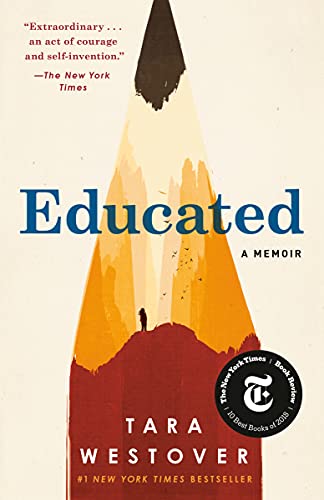 |
|
Abigail Dean’s novel Girl A, while fictional, is based on new reports of some of the most horrific abusive childhood environments. It gives a gripping account of childhood trauma and its lasting impact.
 |
|
|
BELONGING
The common denominator for idyllic-selves, neurotic claims, and hardwired reactions from our lower brains is alienation, the belief that we do not belong. The good news is that we can build our own essential sense of belonging as adults.
As soon as my self-images became realistic, I experienced a strong sense of belonging to nature. Nature always felt kinder, safer to me than people. Now, walks in the woods or on the beach without any neurotic claims snapping me back to my childhood brought a total sense of belonging, the simple joy of existence.
But any changes to my negative image of interacting with people would take more work. But then I remembered Brené Brown’s explanation of the difference between fitting in and belonging in Braving the Wilderness. I reread it.
Dr. Brown’s research revealed that a sense of belonging doesn’t come from outside sources or approval. It comes from seeing, accepting, and living by our authentic-selves. Like Dr. Harney’s definition of the “real-self,” our authentic-self is defined by the values and realistic expectations we bring to everyday life. So I needed to get to know my real-self, my authentic-self.
I always believed that I didn’t understand the rules of life. In my life-view everyone else “got it” except me. However, Dr. Brown’s research had me stop looking at others for their rules and look within myself for my own rules. When I did, I saw that my values and realistic expectations were perfectly fine.
The best advice for building a sense of belonging as an adult came from Dr. Perry’s and Oprah’s “What Happened to You?” They both saw healthy connections with others as the key to belonging.
Reaching out to others petrifies anyone who believes they do not belong in society. But it makes sense. Belonging is like a muscle that grows stronger with exercise. Each healthy interaction declares that you belong, no matter how short or casual.
Interaction with others is standard advice for HSPs. But Dr. Perry’s studies and Ophrah’s compelling examples from her own life and those she has interviewed explain how it creates a sense of belonging for adults who weren’t given it in childhood.
As a loner bordering on a recluse, connecting with people scared me. Then I started having neutral conversations with neighbors while walking my dog. Mostly I asked them about themselves, no politics, religion, or gossip. My life-view started to improve immediately. Their interests and concerns were like my own.
Next, I reached out to people I was closer to if something nagged me, something I rarely did before. Things looming so large within the confines of my head became normal, manageable, and even funny when openly discussed. Every day inconveniences stopped being life’s conspiracies. My adjusted life-view from these connections prevented annoyances from escalating into paralyzing obsessions.
My sense of belonging continues to grow as my self and life views change. But of course, there are relapses, moments of depression, hopelessness, or despair. For these, I reach out to only a handful of people I know I can trust.
I also find writing in a journal helpful. I’ve kept a journal for nearly four decades. Where my entries mainly were about negative thoughts, emotions, and relationships, now they focus on connections. A review of who I spoke with during the day makes me happy.
All of these connections clear away the bungee cords that kept dragging me back to an abusive past. Now I live in the present with life’s opportunities possible and efforts likely to meet with success. My newfound sense of belonging gives me confidence in present and future happiness and the ability to overcome obstacles.
|
|
|
|
Conclusion
From Elaine Aron, we learn the importance of managing arousal as HSPs. From Dr. Perry, we learn how to regulate deregulation caused by childhood trauma. These are different degrees of the same thing.
The ACE Quiz and Big Five Personality Test are great ways to consider whether what happened to you as a child affects you as an adult. According to the CDC, 61% of people have experienced at least one ACE. Mild or moderate arousal for HSPs may have its origin in an ACE. If so, looking for idyllic-self images and improving a sense of belonging may help reduce the incidence of unwanted arousal. Eliminating arousal is more productive than avoidance.
So many resources are now available for HSPs from traumatic childhoods. Help for childhood trauma can include Prolonged Exposure Therapy; Written Exposure Therapy; Eye Movement Desensitization and Reprocessing Therapy; the Post-Induction Therapy Model; the Trauma-Resilience Model; and Trauma-Focused Cognitive-Behavioral Therapy.
|
|
|
|

